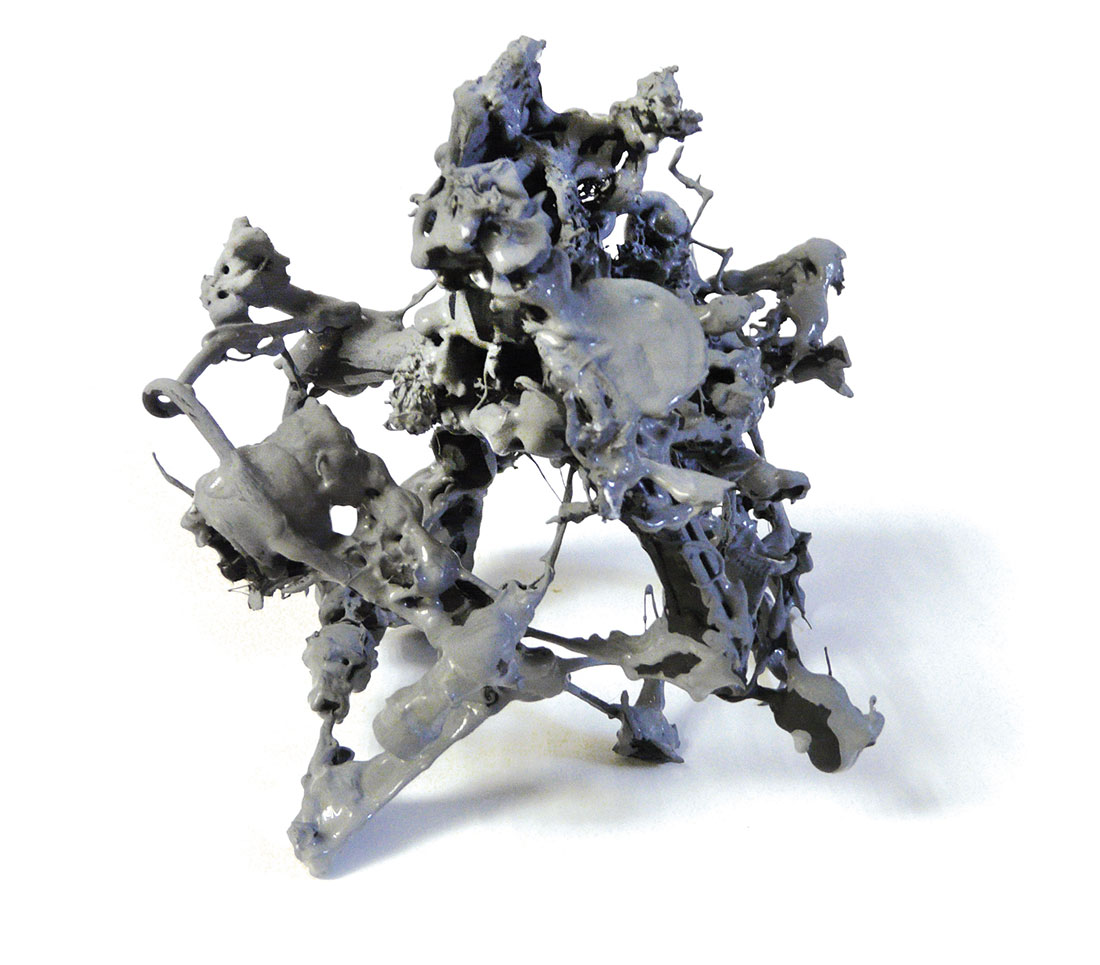Out of Order
How the Cologne artist R.J.Kirsch uses the technical failure as a source of inspiration.
Montages
The world is interspersed with elaborate and intelligent functional processes.
Complex technical functions need guidance. More complex technical functions require more complex instructions. Operating instructions require a lot of patience, quickly reaching the point of excessive demands. Under the title „How to use the world“, Rolf Kirsch began systematically sabotaging operating instructions at the end of the 1980s.
In countless montages, he collaged the already confusing instructions into subversive graphics whose correctness or falsification was hardly distinguishable for the viewer.
Compositions of the most diverse instructions for use, which here are oversized in terms of content to form a global complex that has to be handled like can openers: „Ethical responsibility must capitulate in the face of confusion,“wrote Jürgen Raap in the Kunstforum, and indeed Kirsch's collages contribute to the obscuring of the general overview just as much as they make fun of it.

SOFT IMPACT
170 x 130 cm
Oil on canvas
2014
Folds
At the end of the nineties, his research turned to a central area of current technology. In contrast to the modern subject matter, the preoccupation with modern mobility and the unavoidable accidents of vehicles has been carried out in a series of oil sketches since 2002 in a highly traditional manner. In numerous small-format sketchy paintings, the painter shows a panorama of accidents in the series „Rhythm of Statistics“.
For painting, this is a subject with a great tradition, as a glance into art history quickly proves.

Blech
30x30 cm
Dosenblech
2014
At all times, painters have been interested in the staging of dramatic failure, as one of the most famous examples the painting „The Arctic Ocean“ is better known as „The Failed Hope“ by Caspar David Friedrich from 1824. Where already the series of oil sketches in subject and implementation refers to tradition, the following works also pursue a reference to the history of painting.
In his „Soft Impact“ series, Kirsch takes up the motif of drapery and
stages his accident theme as a variation or continuation of it.
Shadows
The examination of the immaterial image was already one of the Focal points in Rolf Kirsch‘s artistic exploration. From a series of experimental work, partly also within the framework of the co-founded artist group EXPIMAT, concepts have repeatedly emerged that deal with the relationship between traditional and technically conditioned image media. In the work NACHTSCHATTEN, which Kirsch has consistently developed over the past few years, the painter takes his critical discourse beyond pure painting: from the thematization of the folding as such, the transformation of the image carrier into space follows in several steps. Here Kirsch uses folding as the principle of moving from the surface into the third dimension from the illusionistic image to sculpture. The projection as imaging process, first implemented by the use of spray mist, fixes previously folded image carriers in an alternation of light and shadow areas in Analogy to his Convolutionary Paintings.

Prop #8
30 x 30 x 30 cm
versch. Materialien, Heißkleber, 2014
Pressed flat again, the traces of the Fogging creates a three-dimensional image of the original deformation.
In subsequent relief-like works, the folding as such remains, is therefore no longer flattened, but emphasizes the plastic character of the deformation.Both the step into the third dimension and the use of projection as
Both the step into the third dimension and the use of projection as working principle then finds a continuation in the further development of his approach in the production of assemblage-like sculptures, which the artist himself calls „Props“.
These objects, assembled from all kinds of found objects with hot glue, are the final consequence in the dissolution of the purely illusionistic image towards a material-oriented, space-oriented working method. At the same time, Kirsch realizes here, with the use and montage of fragmented technology, his approach of using technical faults, the fragmentation of technical equipment as the starting point for his artistic work.
Malfunctions
The fundamental examination of technology as such is, in addition to the discussion of materiality of images, the focus is primarily on the topic of disruption of technical processes. Disturbance as an inherent moment in every technology, which almost inevitably has an effect sooner or later, but also as a moment of artistic approach, to explore technique at the limits of their own to expose functionality.

RHYTHM OF STATISTIC
25 x 35 cm
Oil on wood
2013
SCHEMES
SHADOW PROJECTION
PASSAGEN Köln / Haus am Maarweg, 2020
250 x 500 cm
versch. Materialien, LED






